the best stadiums in the world according to the English magazine "Four Four Two"
1-Alberto José Armando Stadium "La Bombonera" Buenos Aires, Argentina
The Estadio Alberto José Armando, known worldwide as La Bombonera, is a football stadium, owned by Club Atlético Boca Juniors. It is located in the La Boca neighborhood of the Autonomous City of Buenos Aires, Argentina. It has a capacity for more than 49,000 spectators, of which almost 15,000 have seats, being one of the most capacious venues in the country. Due to its capacity, it is the fourth largest Argentine stadium (after the Monumental Stadium, the Mario Alberto Kempes Stadium and the Ciudad de La Plata Stadium).
Recognized by various international media as one of the most emblematic stadiums in the world, it was inaugurated on May 25, 1940 with a friendly "classic" match between Boca Juniors and San Lorenzo, a match won by the local team by 2 to 0. Ricardo Alarcón, at 12 minutes into the game, he became the first player to score at the new stadium, a fact that he also repeated a few days later, on June 12, when the first game of an official tournament was played against Newell's Old Boys, and that ended with the same result as the previous one. On April 20, 1986, he received an official name for the first time: Estadio Camilo Cichero, in honor of the president who began the works. On December 27, 2000, the name was changed to the current one, as a tribute to Alberto José Armando, who was president of the club in the 1950s, 1960s and 1970s. In 1996, under the presidency of Mauricio Macri, it was held a profound reform, in which the preferential stalls and vip boxes were built. Likewise, the external decoration of the stadium was commissioned to the plastic artists Romulo Macció and Pérez Celis.
2- Camp Nou Stadium Barcelona, Spain
3- Wembley London, England
The most famous venue in Britain - London's Wembley Stadium - hosted SummerSlam 1992, setting the second highest attendance record for a WWE event with 80,355 attendees. However, the original Wembley Stadium closed in 2000 and demolished in 2003, giving way to New Wembley Stadium instead - a perfect host for The Show of Shows.
The new stadium was built in the place of the original, maintaining the rich history of the town that houses the national stadium of England. Since its construction in 2007, the site has been occupied for numerous football games and NFL games, and has the capacity to support more than 100,000 WWE members. Given the record of attendance in SummerSlam in the original Wembley, it is not difficult to imagine that fans from all over the world descend on London to see WrestleMania and set new records, while enjoying one of the most beautiful cities in the world.
4- Azteca Stadium, Mexico City
The architects Pedro Ramírez Vázquez and Rafael Mijares built the stadium for the 1970 FIFA World Cup. The stadium hosted ten games, including the final match, when Brazil defeated Italy, in which Pelé played his last professional game. A second FIFA World Cup was also held here in 1986, during which nine exciting matches were played in the stadium, including Argentina's victory over England by 2 to 1. Imagine the excitement of seeing some of the best players in the game. world in the stadium where Diego Maradona of Argentina scored the two most famous goals of all time, including the goal known as The Hand of God.
5- Giuseppe Meazza Stadium "San Siro" Milan, Italy
The Giuseppe Meazza Stadium is a football stadium in Milan, and the bigger Italy, with a total of 81 277 seats (of which 80 018 distributed in the three rings) and one of the most famous and prestigious soccer facilities in the world, so that he was nicknamed the “Scala del Calcio”. The facility hosts the home matches of AC Milan and Inter and the Italian national football team.
Until 1980 it was called San Siro Stadium, named after the neighborhood in which it stands. Intended primarily to calcium, since the seventies also hosts large concerts internationally; in 2009 he also hosted a meeting of the Italian national rugby committed against New Zealand, marking the largest gathering in Italy for a meeting of the framework.
6- Maracanã Stadium Rio de Janeiro, Brazil
After the announcement that Brazil will host the 1950 World Cup, the state authorities of Rio de Janeiro decided to finance a new central stadium for the entire region. In 1947 the offers were launched and the design of seven local architects was chosen, which means that Rio would go through an almost circular stadium. As for the location, the site of a racecourse in the district of Maracanã was selected, not without the opposition that surrounded the plans for the stadium from the beginning.
Construction work began in August 1942, but quickly began to slow down despite the fact that FIFA sent a European expert to help carry out the project. In June 1950, the day of the inauguration, the land was far from ready, lacked basic infrastructure, such as bathrooms and scaffolding in the spectator areas. Despite the circumstances, in the first place, several games have attracted massive crowds, rarely falling below 100,000 people. The biggest was the final of the World Cup in which Brazil faced Uruguay against 199,854 people. Some say that the number was even higher, there are also rumors that when Brazil lost, people jumped from the high scaffolding, committing suicide. Multitudes of more than 150,000 occurred during the next decade during the Brazil internationals or the Flamengo - Fluminense derbies of Rio de Janeiro.
For decades, an amazing list of big events was held here, starting with the most important football games, both national and international. Being selected to host the 2014 World Cup final, it became one of the only two stadiums in the world to host this prestigious game twice. Then came the announcement that the opening and closing ceremonies of the 2016 Summer Olympics will also take place here, making Maracanã the only stadium for such ceremonies without an athletics track. In addition to these tournaments there were national finals, massive volleyball games, pan-American ceremonies, papal visits and some of the biggest concerts in the world with audiences of not much less than 200,000 people (Frank Sinatra, Tina Turner, Rolling Stones, The Police and many plus).
7- Signal Iduna Park Dortmund, Germany
The history of this stadium began more than 40 years ago, to be more exact on April 5, 1965. After four long years of discussions regarding the extension and modernization of the track "Rote Erde", which had been many years above, the city's management and financial committee "takes note of the suggestion not to extend the Rote Erde stadium, but considering the use of western practice fields and minimal areas of the pool, a new stadium could be built." The first obstacle to go towards a new arena, named in the official colloquium "twin stadium" (since it will be built parallel to Rote Erde) is overcome.
The project receives a decisive impulse when at the beginning of the 70s Cologne desists to build a new stadium, in this way there is the free way for Dortmund to present itself as the requesting city to host the 1974 football world cup - and so the construction of a new stadium. If it were not an event as such, no additional financial resources would have been granted by the federated state and the federated country, and the Westfalen stadium would not have been built.
On April 2, 1974 - nine years after the decision of the state guilds - the long-awaited moment arrives: 54,000 spectators, mostly on foot, take place at the Westfalen stadium. It opens with a friendly match against Schalke 04. He has not lost any of his fascination to this day. Quite the opposite. There are radio commentators who were ecstatic talking about the "Scala of German football", when they talk about this unique stadium: the closeness to the playing field, the acoustics due to the complete roof, accompanied by the unique fascination of soccer friends in the region. All this leads to create a stimulating atmosphere, which takes over the visitors and is highly feared by the adversaries. During a survey conducted in May 2006, professional players from the 18 football clubs in the Bundesliga said their preferred stadiums were in Hamburg (28%) and Dortmund (27%).
8- Santiago Bernabéu Stadium Madrid, Spain
The first major remodeling of the stadium took place in 1954, thanks to which the capacity increased to 125,000 spectators, who converted the Real Madrid Coliseum into the second stadium in Europe that accommodated more people, just behind Wembley .
Another remarkable date was on May 18, 1957, when the first match was played with artificial light and at night: the Real Madrid - Recife Sport that ended with 5-3 for whites.
The celebration in Spain of the 1982 World Cup resulted in a new remodeling of the Santiago Bernabéu, which had to reduce its capacity to 90,800 spectators, since FIFA forced to have half the capacity of seats, something that did not happen in the coliseum white, which mostly had standing locations.
But the biggest remodeling came in the 90s. This time it was UEFA that created a regulation by which all seats should be seats, something that forced Real Madrid to expand the stadium to compensate for the loss of space and the decrease in capacity by including the seats in all its stands.
A third amphitheater was built that increased the height of the stadium from 22 to 45 meters, a fact that also made it necessary to provide the Coliseum with more power in lighting. Finally, after all the works, the capacity was 74,328 spectators.
With the arrival of Florentino Pérez to the presidency and the hand of Estudio Lamela, the Santiago Bernabéu underwent a new remodeling in which 127 million euros were invested. The grandstands were enlarged and the official shop, new boxes and the club offices were added. The capacity increased again: to 80,354 spectators.
And that's not all, because in 2014 the new remodeling of the white stadium was approved, which will begin next summer and will make the Santiago Bernabéu one of the most modern stadiums in the world. The project consists of expanding the capacity in 8,000 locations, the coating of the stadium, and the creation of green areas, a hotel, a shopping center, and several parking lots.
9- Old Trafford Manchester, England
The Old Trafford stadium belonging to Manchester United since 1910 is considered by the European public as one of the best on the continent. Great pages of glory have been written on his lawn and many spectators have gone through his bleachers.
Opened on February 19, 1910 with a capacity for 80,000 spectators and a support system designed by the Scottish architect Archibald Leitch (Hampden Park, Ibrox Stadium and White Hart Lane), Old Trafford was from its first day a colossus.
In 1939 he would mark his attendance record in a FA CUP Semifinal match between the Wolves and Grimsby, which attracted 76,962 fans. But it would not be the only record, in the first match of the 06/07 League established the highest number of spectators in a Premier League match, 75,115 spectators.
Two years later it would be bombed by the Nazis and go through the worst stage of its history. Manchester United should play on Maine Road, the stadium of Manchester City (its traditional rival) and undergo the reconstruction of its emblematic stadium. The event ended in 1949 and Old Trafford reappeared with a capacity of 67,000 spectators.
But in the following decades the capacity would be reduced for reasons of security that afflicted all of Europe until arriving at a poor capacity of 43,000 spectators between 1994-1996.
10- Allianz Arena Munich, Germany
The stadium has many peculiarities, but from the point of view of the visitor perhaps the most striking is its ability to shed skin. It is red, white or blue, depending on the moment. White if the German team plays, red if it's Bayern Munich's turn, and blue when the home team is the TSV 1860 München, a team from the German second division. The illumination works the miracle and makes clear to many kilometers away who moves the ball, whose field is that night.
In the Allianz Arena, inaugurated in 2005, today there are 71,000 people, after a recent expansion. Of course, for tourists there are guided tours -except on game days-, and a museum, baptized as Bayern world, more than 3,000 square meters of exhibition to dive into their sporting successes.

I hope you enjoy my publication and see you in the next to continue sharing with all of you !!!!!!!!!!!!!@brianrg13!!
.jpg)
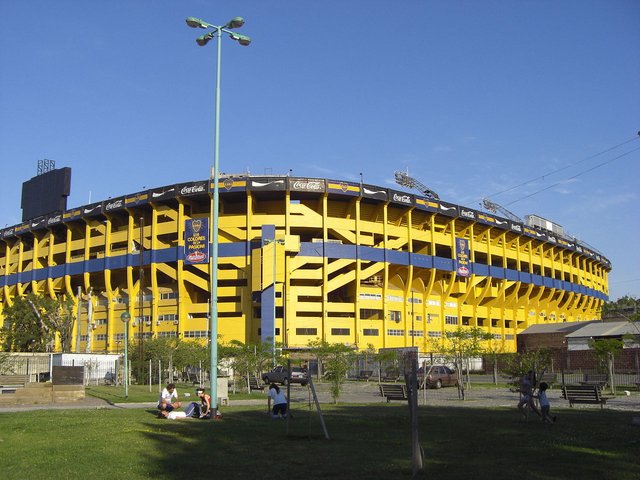
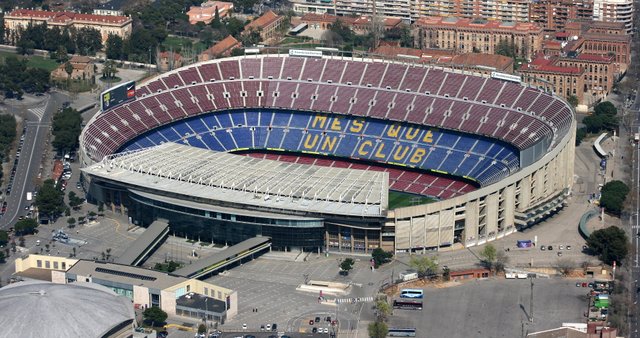
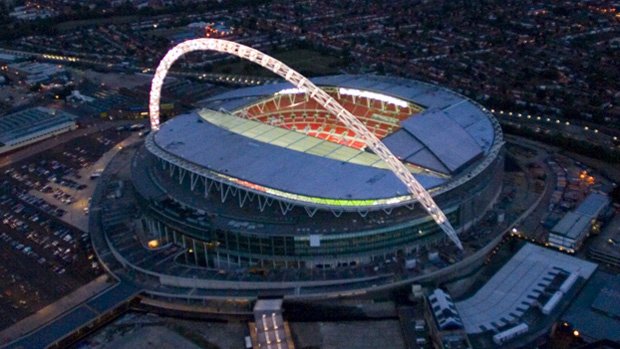

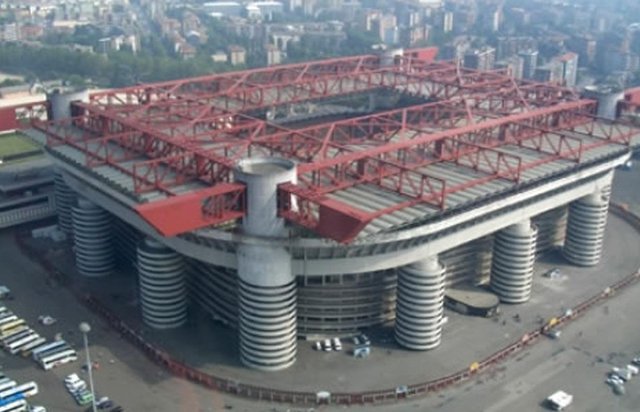
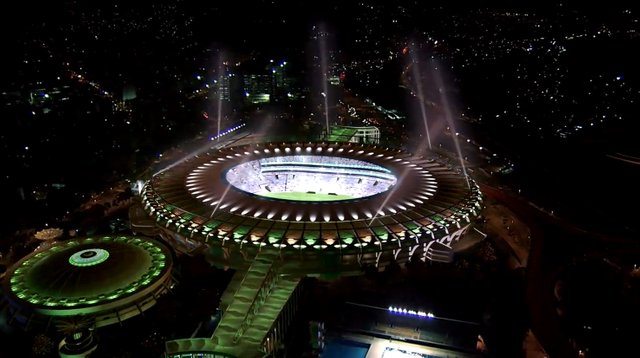
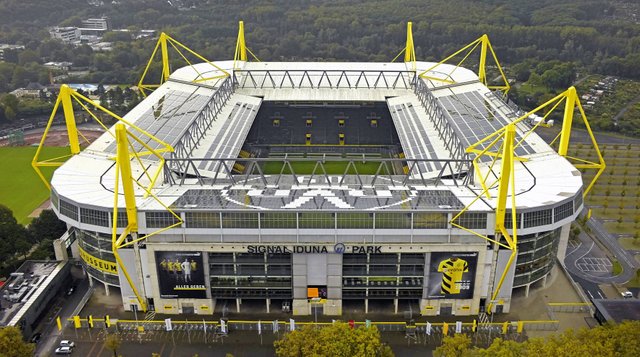

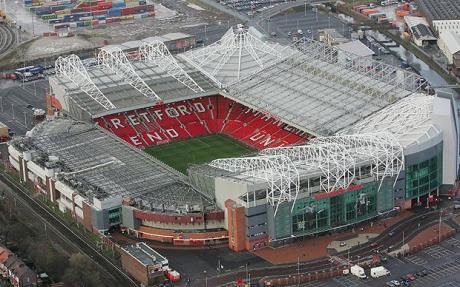

World of Photography Beta V1.0
>Learn more here<
You have earned 5.05 XP for sharing your photo!
Daily photos: 1/2
Daily comments: 0/5
Multiplier: 1.01
Server time: 09:05:45
Total XP: 102.40/200.00
Total Photos: 19
Total comments: 3
Total contest wins: 0
Follow: @photocontests
Join the Discord channel: click!
Play and win SBD: @fairlotto
Daily Steem Statistics: @dailysteemreport
Learn how to program Steem-Python applications: @steempytutorials
Developed and sponsored by: @juliank
Congratulations! This post has been upvoted from the communal account, @minnowsupport, by diosnellyg12 from the Minnow Support Project. It's a witness project run by aggroed, ausbitbank, teamsteem, theprophet0, someguy123, neoxian, followbtcnews, and netuoso. The goal is to help Steemit grow by supporting Minnows. Please find us at the Peace, Abundance, and Liberty Network (PALnet) Discord Channel. It's a completely public and open space to all members of the Steemit community who voluntarily choose to be there.
If you would like to delegate to the Minnow Support Project you can do so by clicking on the following links: 50SP, 100SP, 250SP, 500SP, 1000SP, 5000SP.
Be sure to leave at least 50SP undelegated on your account.